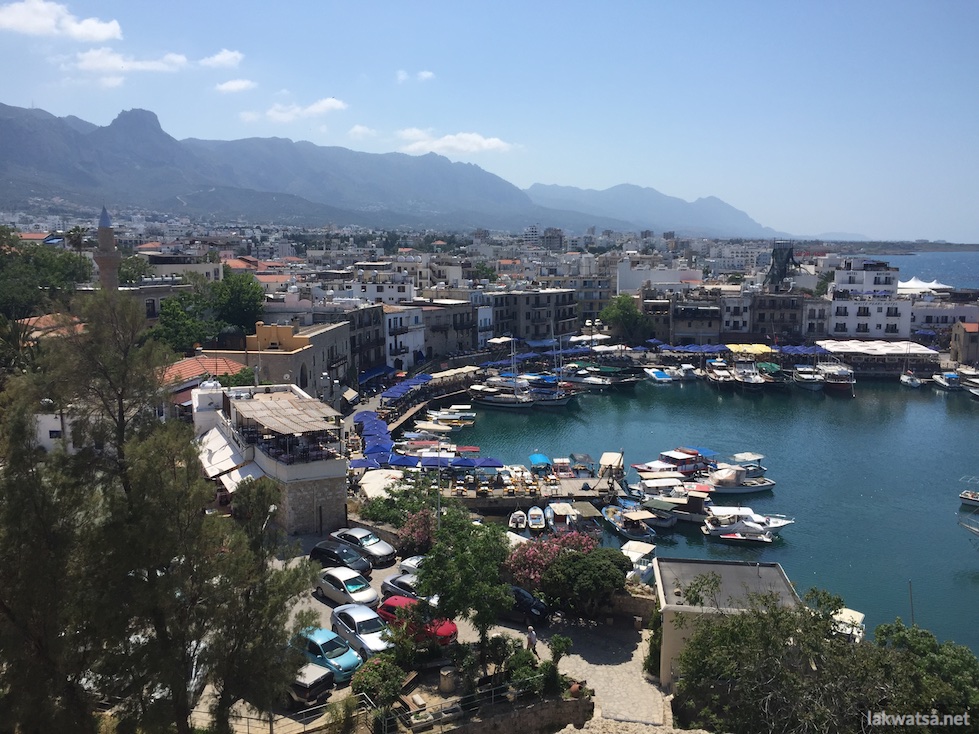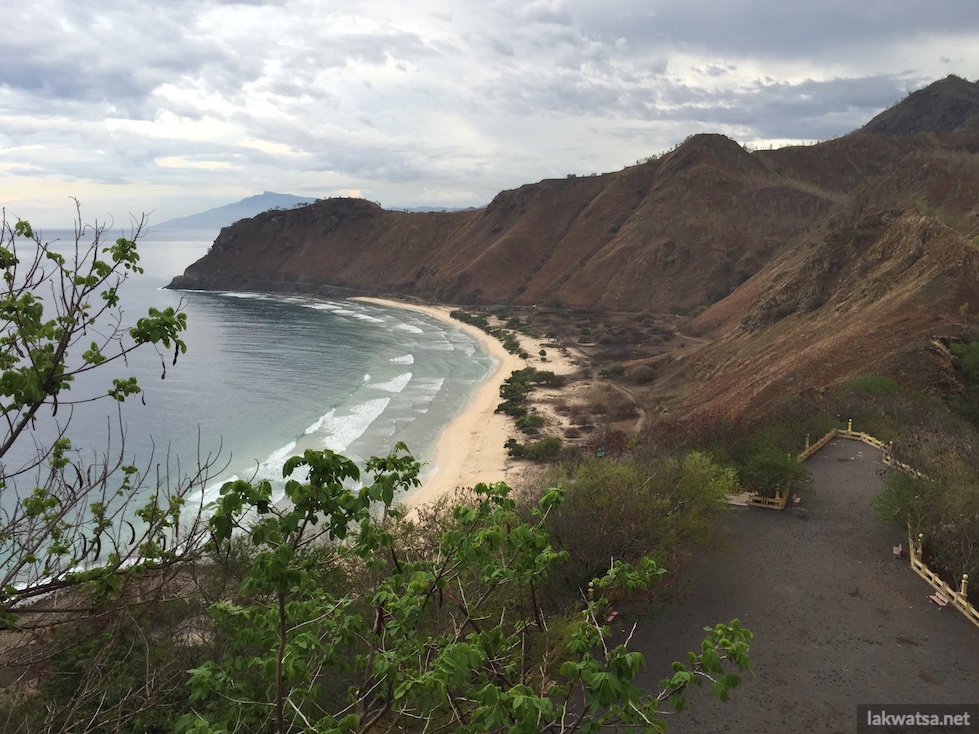A Journey Through Myanmar: From Yangon to Bagan and Mandalay
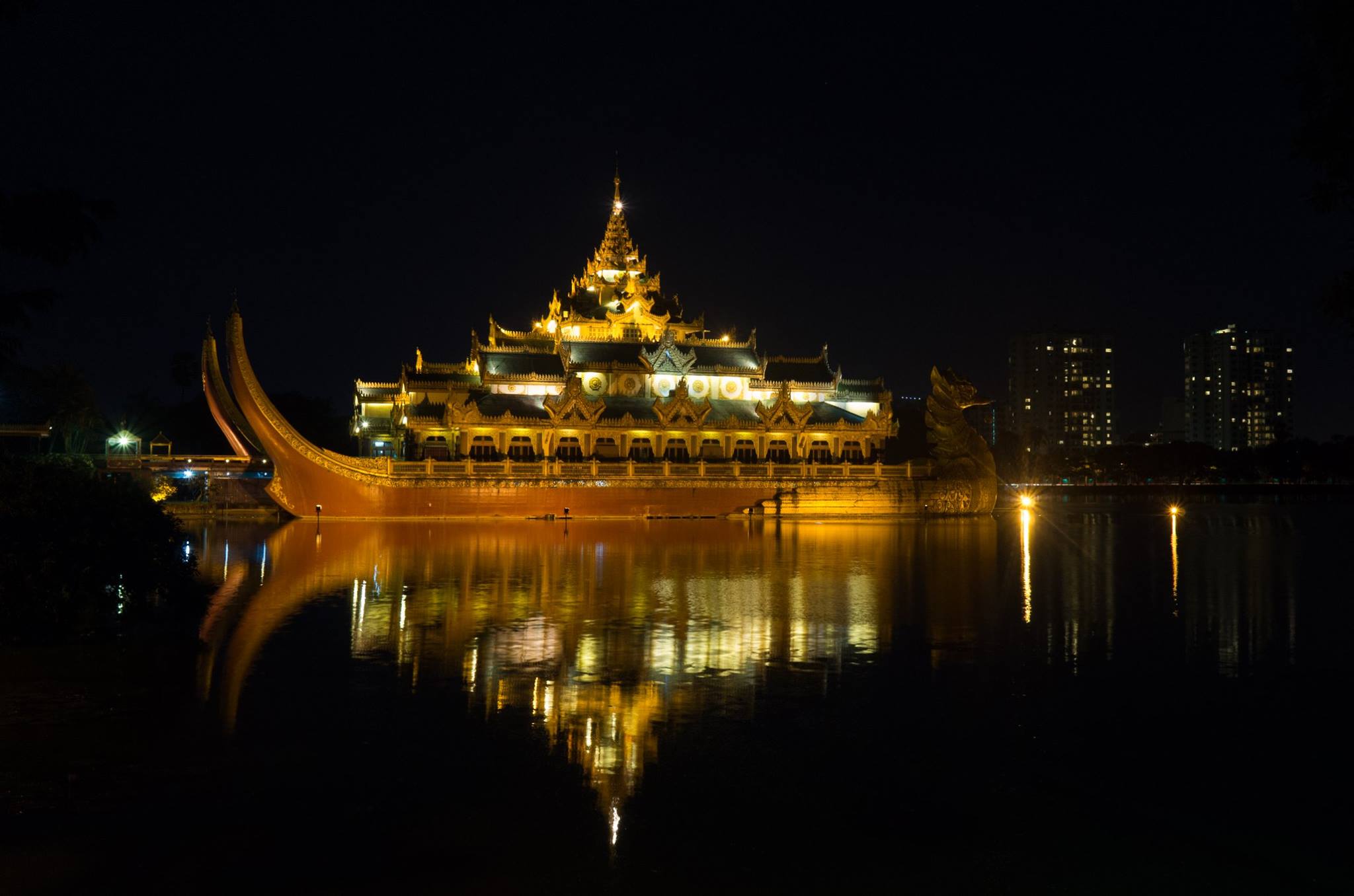
Myanmar, a land steeped in history, culture, and natural beauty, offers travelers an unparalleled experience in Southeast Asia. This blog will take you from Yangon to Bagan and Mandalay, showcasing some of the country’s most iconic destinations. Along the way, we’ll explore Yangon’s bustling streets, the ancient temples of Bagan, and Mandalay’s rich royal heritage, with a stop in the peaceful hill station of Kalaw. Whether you’re seeking cultural immersion, spiritual experiences, or outdoor adventures, this journey offers it all. Let’s dive into the magic of Myanmar.
Starting in Yangon: The Gateway to Myanmar
Yangon, formerly known as Rangoon, is the perfect starting point for any Myanmar adventure. The country’s largest city, Yangon, is a melting pot of culture, with its vibrant markets, colonial architecture, and deep-rooted Buddhist traditions.
Shwedagon Pagoda: The Icon of Yangon
No trip to Myanmar is complete without visiting the Shwedagon Pagoda, the most sacred Buddhist site in the country. Towering above the Yangon skyline, this golden stupa is believed to be over 2,500 years old and is said to house relics of the Buddha. The Shwedagon Pagoda attracts thousands of visitors and pilgrims daily, creating a spiritual atmosphere as locals light candles and offer prayers.
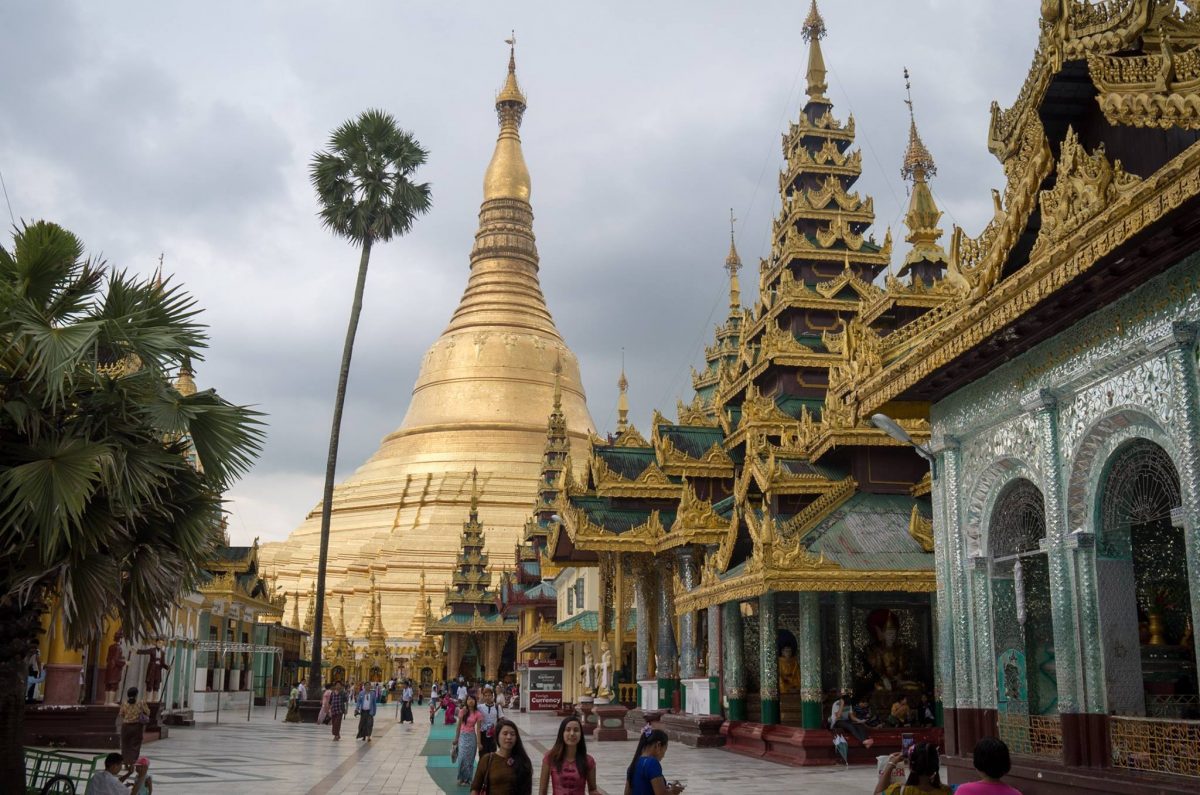
Discover Yangon’s Colonial Architecture
A walk through downtown Yangon reveals a treasure trove of colonial-era buildings, many of which remain from Myanmar’s time under British rule. The Sule Pagoda, centrally located in a bustling roundabout, and the Yangon City Hall are just two examples of the beautiful architecture that tells the story of the city’s past. The juxtaposition of crumbling colonial buildings and the vibrant local life around them gives Yangon a distinct and charming character.
Yangon’s Food Scene: A Taste of Tradition
Beyond the temples and architecture, Yangon’s street food scene is an essential part of its charm. The city’s markets and street vendors offer local delicacies such as mohinga, a fish-based noodle soup, and laphet thoke, Myanmar’s famous tea leaf salad. This tangy and slightly bitter salad made from fermented tea leaves, peanuts, garlic, and sesame seeds is a must-try dish that represents the flavors of Myanmar’s culinary heritage.
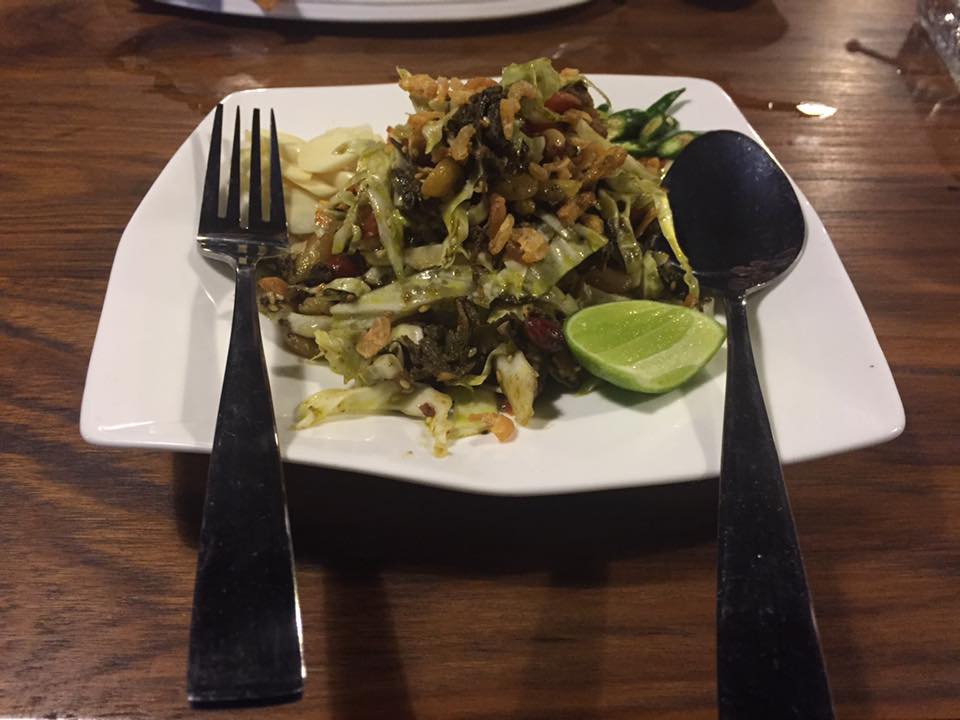
The Use of Thanaka: A Unique Cultural Tradition in Myanmar
One of the most distinctive and beautiful aspects of Myanmar’s culture is the widespread use of Thanaka, a traditional cosmetic paste worn by men, women, and children. Made from the ground bark of the thanaka tree, this pale yellow paste has been used in Myanmar for over 2,000 years. Its origins are deeply rooted in the country’s history, with its first documented use dating back to the ancient kingdoms of Myanmar.
Thanaka is not only used for its aesthetic appeal but also for its practical benefits. It provides protection from the sun, serves as a natural cooling agent, and is believed to improve skin conditions like acne. To make the paste, the bark of the thanaka tree is ground on a flat, circular stone with a small amount of water until a creamy, smooth mixture is formed. This is then applied to the face in delicate patterns—often in circular shapes on the cheeks, or sometimes more elaborate designs.
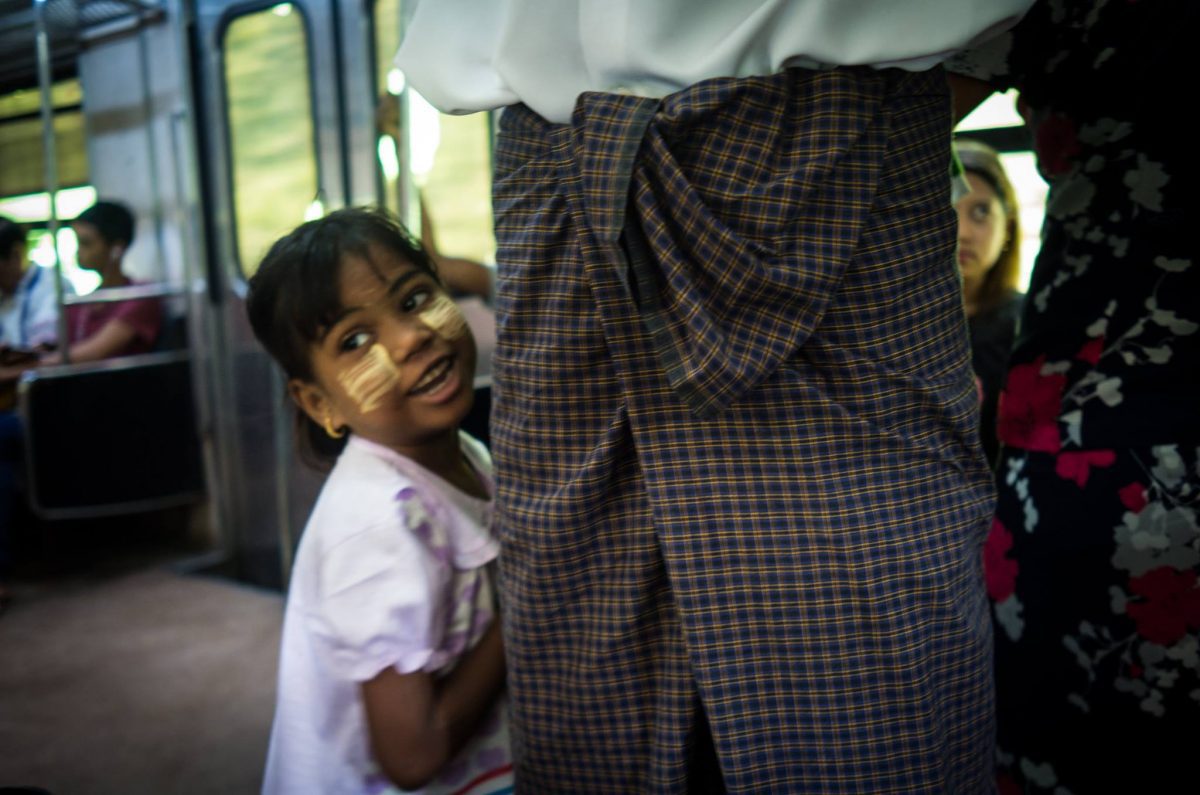
Bagan: The Land of Temples
After exploring Yangon, the next stop from Yangon to Bagan and Mandalay is the ancient city of Bagan, one of Myanmar’s most extraordinary destinations. Known for its vast plain dotted with thousands of temples and pagodas, Bagan is a UNESCO World Heritage site and a testament to Myanmar’s rich history.
Exploring Bagan’s Temples
Bagan is home to over 2,000 temples, each with its own unique design and history. Some of the most famous temples include Ananda Temple, known for its stunning architecture and murals, and Shwezigon Pagoda, one of the oldest pagodas in Bagan. Many travelers opt to explore the temple plain by e-bike or horse cart, allowing for a leisurely and immersive experience through this vast, open landscape.
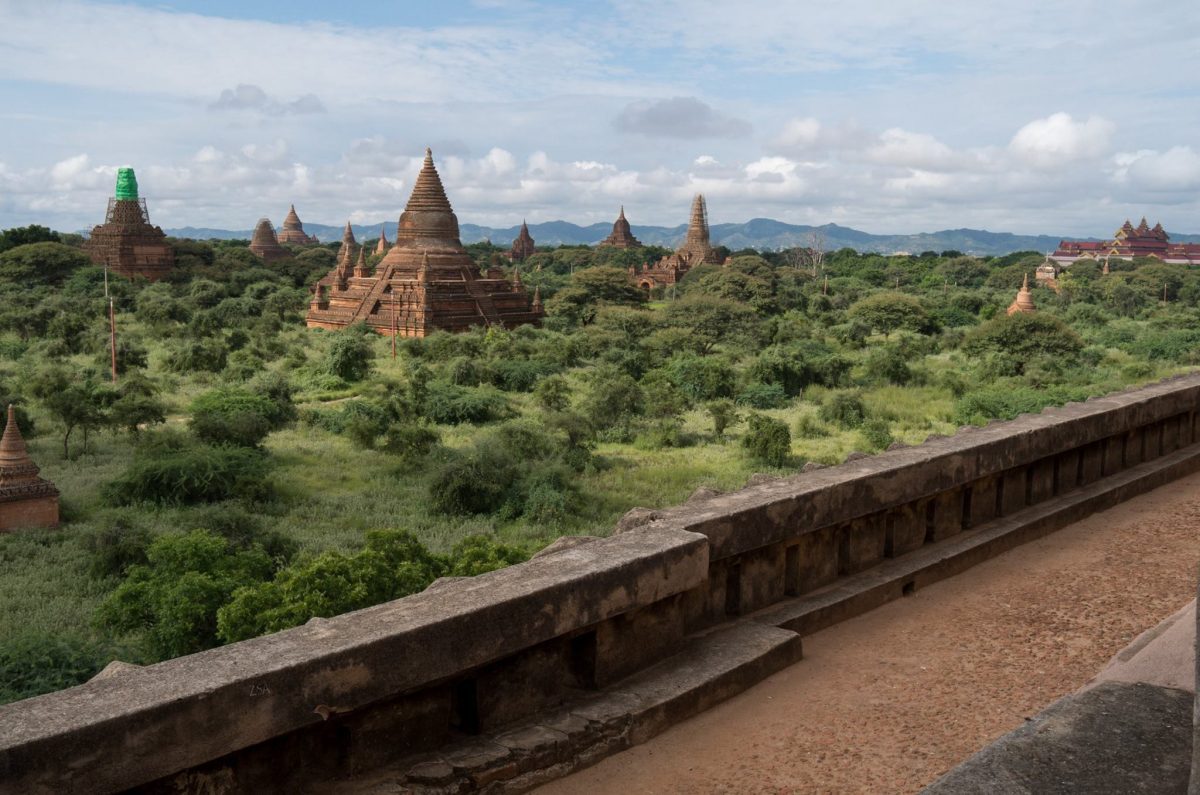
Sunrise in Bagan: A Moment of Magic
Watching the sunrise over Bagan’s temple plain is a once-in-a-lifetime experience. As dawn breaks, the mist slowly lifts, revealing the silhouettes of ancient temples bathed in golden light. For an even more breathtaking view, many travelers take a hot air balloon ride over the temples at sunrise. This surreal experience offers a panoramic view of one of the world’s most iconic archaeological sites.
Local Markets and Cultural Insights
Bagan is more than just temples. A visit to the Nyaung U Market offers insight into the daily lives of locals, with stalls selling everything from fresh produce to handmade crafts. Additionally, Bagan is known for its lacquerware—an ancient craft that has been passed down through generations. Visiting a local lacquerware workshop allows visitors to see how artisans skillfully create intricate designs on bowls, boxes, and decorative pieces.
From Bagan to Mandalay: A Scenic River Journey
Continuing our journey from Yangon to Bagan and Mandalay, the next leg takes us along the Irrawaddy River, Myanmar’s longest and most important waterway. A boat ride from Bagan to Mandalay offers a peaceful way to experience the country’s stunning rural landscapes, passing by small fishing villages, pagodas perched on riverbanks, and fields where farmers work their land.

The Irrawaddy River: Myanmar’s Lifeblood
The Irrawaddy River, also known as the Ayeyarwady, has been a crucial part of Myanmar’s history and economy for centuries. The boat ride from Bagan to Mandalay takes around 10-12 hours, but the slow pace is an opportunity to relax and absorb the tranquil beauty of the countryside. As the boat drifts along the river, you’ll witness local life unfold along the banks, with children playing in the water and buffalo grazing in the fields.
Sunset on the Irrawaddy
One of the highlights of this boat journey is witnessing the sunset over the Irrawaddy River. As the sun sinks below the horizon, the river and surrounding landscape are bathed in a warm, golden glow, creating a peaceful and picturesque scene that will remain etched in your memory long after the journey ends.
Mandalay: The Royal City
Arriving in Mandalay, the last royal capital of Myanmar, we continue our journey from Yangon to Bagan and Mandalay by exploring this culturally rich city. Mandalay is home to impressive pagodas, monasteries, and royal relics, making it a must-visit destination for those interested in Myanmar’s regal history.
Mandalay Hill: A Panoramic View
One of the first stops in Mandalay should be Mandalay Hill, a sacred site offering panoramic views of the city and the Irrawaddy River. The climb to the top is dotted with small shrines and pagodas, and once at the summit, visitors are rewarded with stunning views of the surrounding landscape.
Mandalay Palace and Kuthodaw Pagoda
The Mandalay Royal Palace, the last royal residence of Myanmar’s kings, stands at the heart of the city. While much of it was destroyed during World War II, it has been reconstructed and is open to visitors today. Nearby, the Kuthodaw Pagoda is home to the “world’s largest book”—729 marble slabs inscribed with Buddhist teachings, earning it a place in the UNESCO Memory of the World Register.
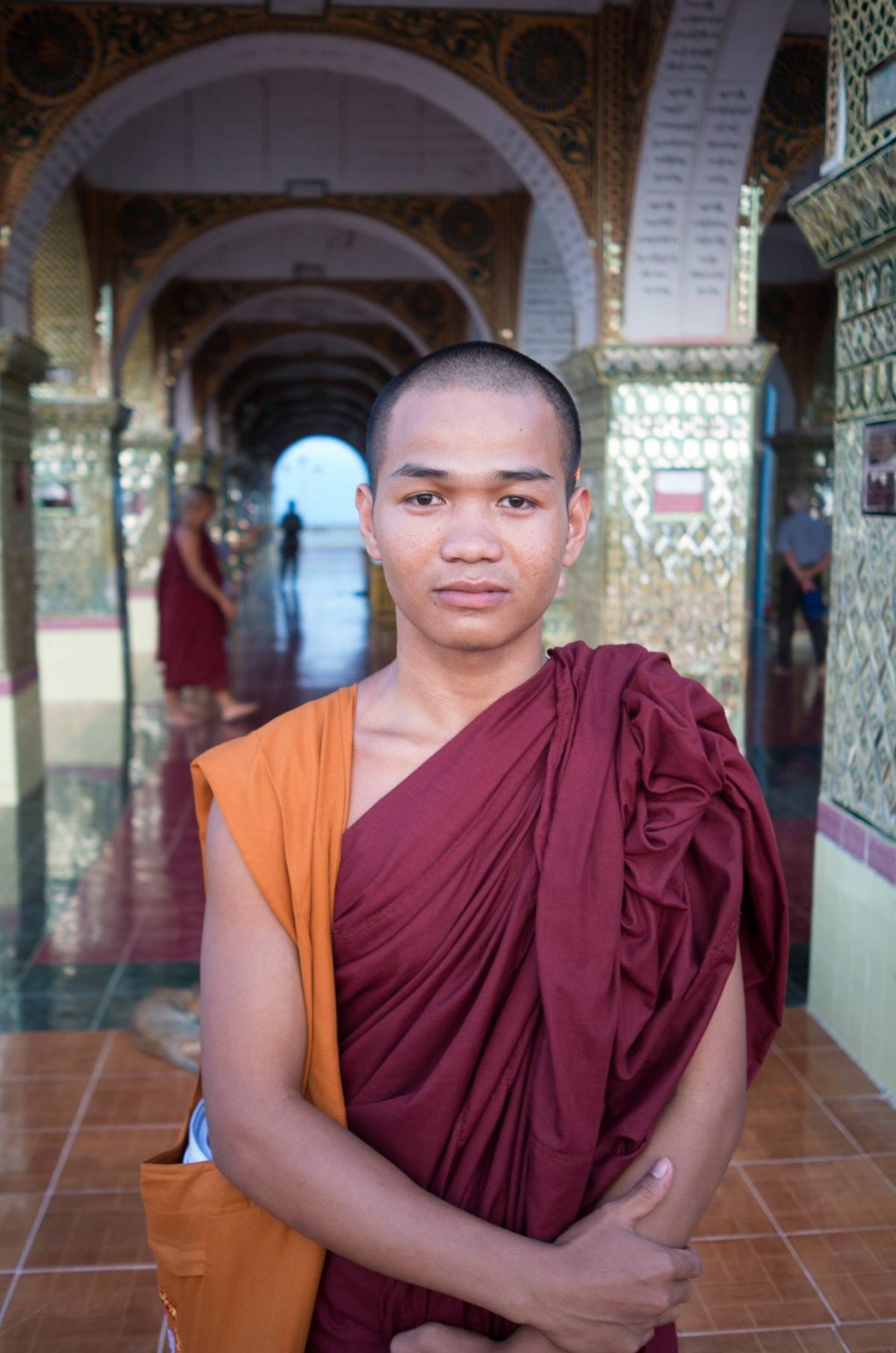
Today, monks play an integral role in Burmese society, with many young men spending part of their lives in monasteries, even if only for a short period, to learn Buddhist teachings and cultivate discipline. Monks are highly respected and are seen as spiritual guides, often participating in ceremonies, community work, and leading daily prayers.
U Bein Bridge: The World’s Longest Teak Bridge
A short drive from Mandalay lies the U Bein Bridge, the longest teakwood bridge in the world, spanning 1.2 kilometers across Taungthaman Lake. The bridge is particularly beautiful at sunset, as locals and monks in saffron robes cross the bridge, silhouetted against the vibrant colors of the setting sun.
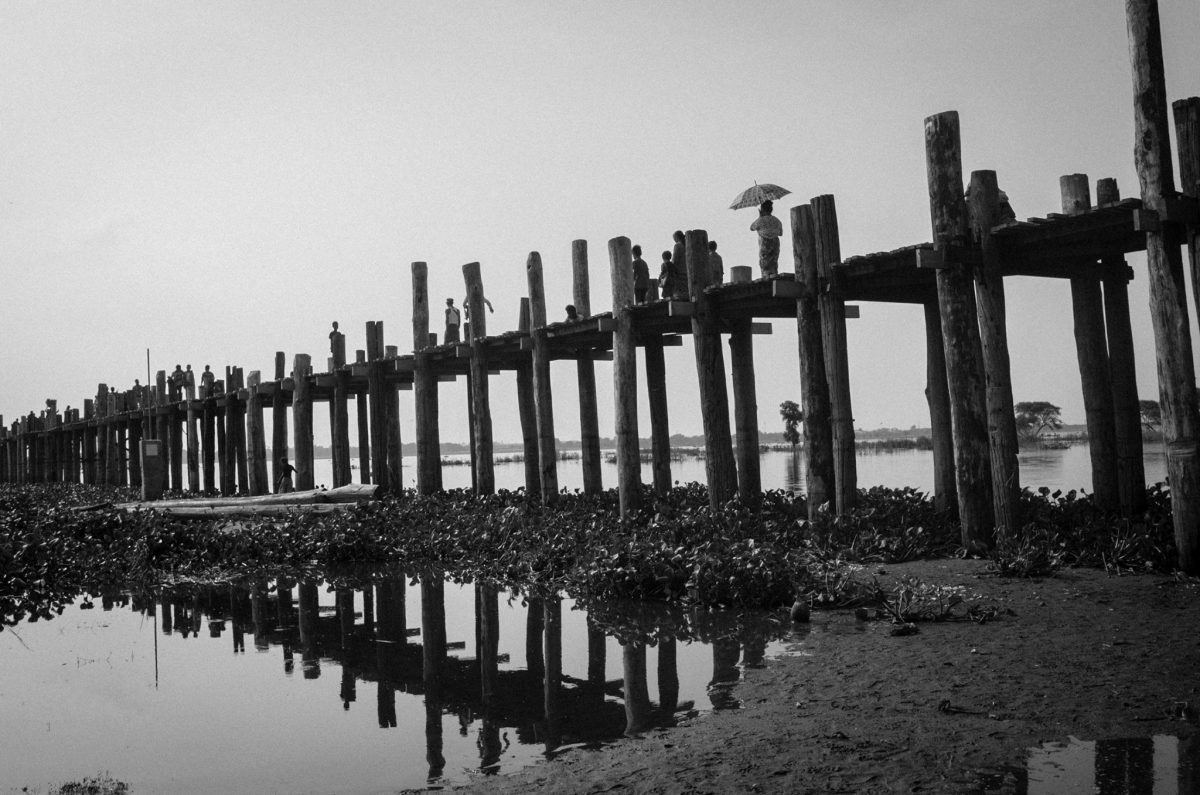
Nyaung Shwe: Gateway to Inle Lake and a Vibrant River Market
No journey from Yangon to Bagan and Mandalay is complete without a stop at Nyaung Shwe, the bustling gateway to Inle Lake. This charming town is not only the starting point for exploring the lake but is also home to one of Myanmar’s most famous river markets.
Nyaung Shwe River Market: A Cultural and Commercial Hub
The Nyaung Shwe River Market is a vibrant gathering place where traders from nearby villages come to sell their goods. This market, typically held on a rotating schedule with other markets around Inle Lake, is a colorful mix of local produce, handmade crafts, and traditional foods. The market is often set along the riverbanks, creating a picturesque scene of boats laden with goods and people haggling over fresh fruits, vegetables, textiles, and even silverware.
At the market, you can witness the diverse ethnic groups in the area, including the Pa-O, Shan, and Intha people, dressed in their traditional attire. The river market is a sensory overload of sights, sounds, and smells—a true immersion into the local culture.
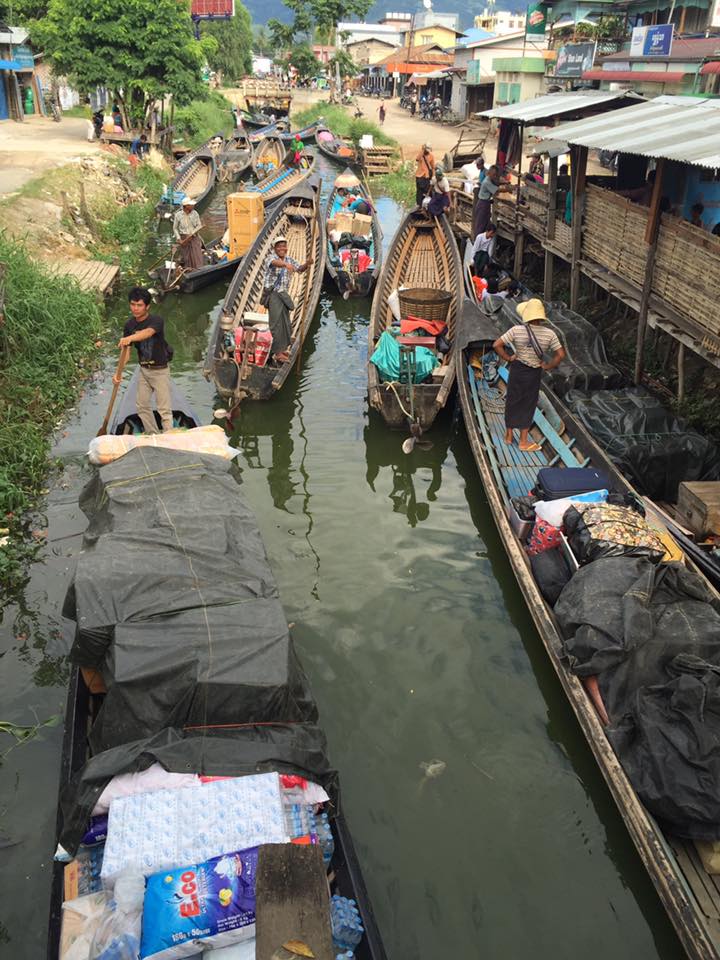
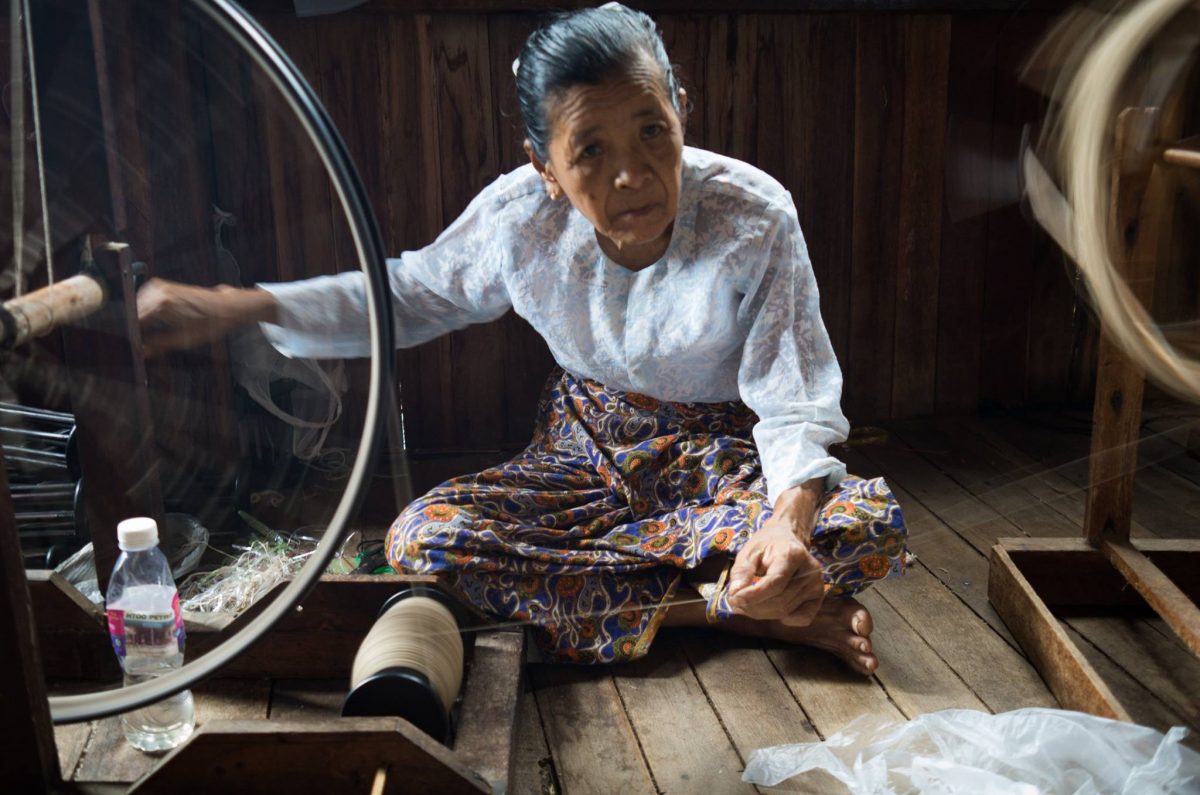
Exploring Nyaung Shwe Town
Beyond the market, Nyaung Shwe itself is a charming town worth exploring. It’s filled with small pagodas, lively teahouses, and quaint guesthouses. Many travelers use Nyaung Shwe as a base for exploring Inle Lake, but don’t miss the chance to walk around town, visit Shwe Yan Pyay Monastery, or simply relax by the riverfront cafes. The slower pace of life here makes it a perfect transition from the more hectic urban environments of Yangon and Mandalay.
Kalaw: A Trekker’s Paradise
From Mandalay, our journey from Yangon to Bagan and Mandalay continues to the hill station of Kalaw, a serene escape known for its trekking opportunities and cool mountain air. Located in the Shan State, Kalaw offers a peaceful retreat and a gateway to the famous trek to Inle Lake.
Trekking Through Kalaw’s Hills and Villages
Kalaw is renowned for its multi-day treks, particularly the route from Kalaw to Inle Lake, which takes two to three days. Along the way, trekkers pass through picturesque hills, terraced rice fields, and villages inhabited by the Danu, Pa-O, and Taungyo ethnic groups. The trek offers a unique opportunity to experience rural life in Myanmar, with overnight stays in traditional village homes.
Exploring Kalaw’s Colonial Charm
Kalaw, a former British hill station, retains much of its colonial charm. The town is filled with colonial-era buildings and has a relaxed, laid-back atmosphere. Visitors can enjoy walking around the local markets, sampling traditional Shan food, and soaking in the cool mountain air.
The Trek to Inle Lake: A Natural Wonder
The final leg of the journey takes us to Inle Lake, where the famous Intha fishermen practice their unique leg-rowing technique. After completing the trek from Kalaw, a boat ride on Inle Lake offers a chance to explore floating gardens, stilted villages, and pagodas. The lake’s tranquil beauty, combined with the fascinating local culture, makes it a fitting end to this incredible journey.
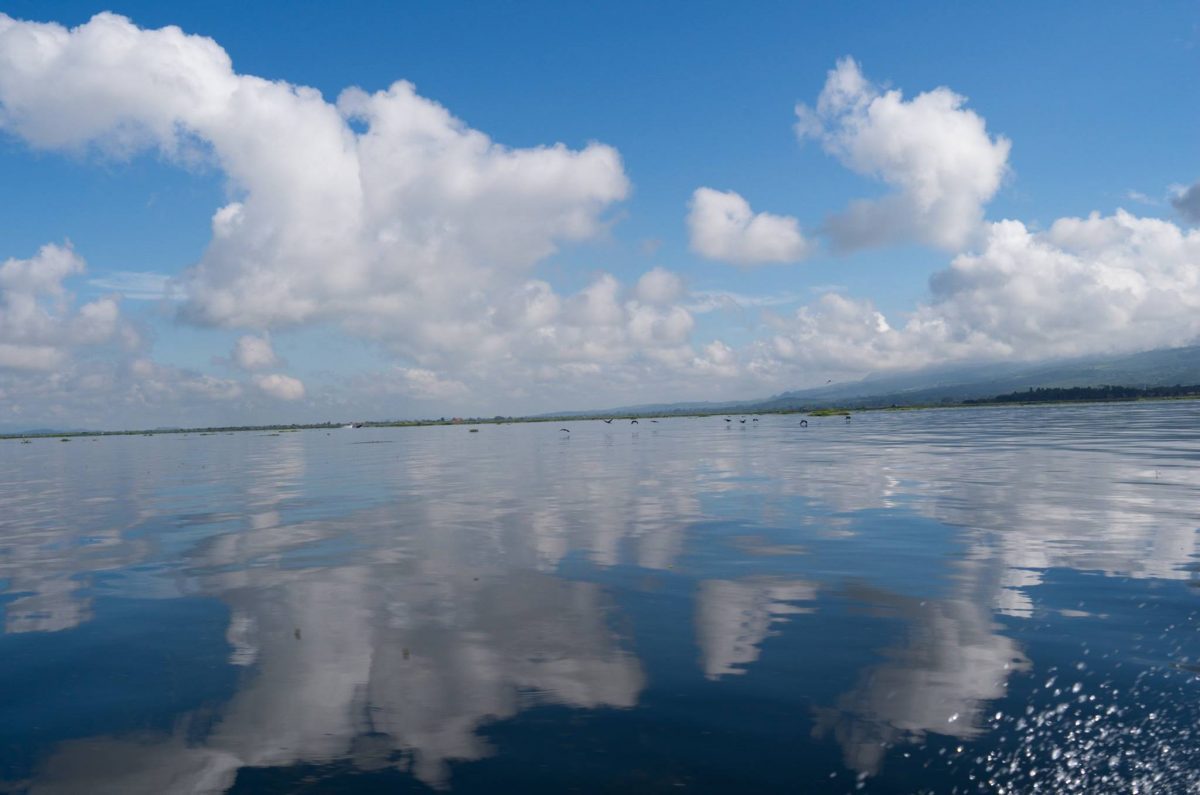
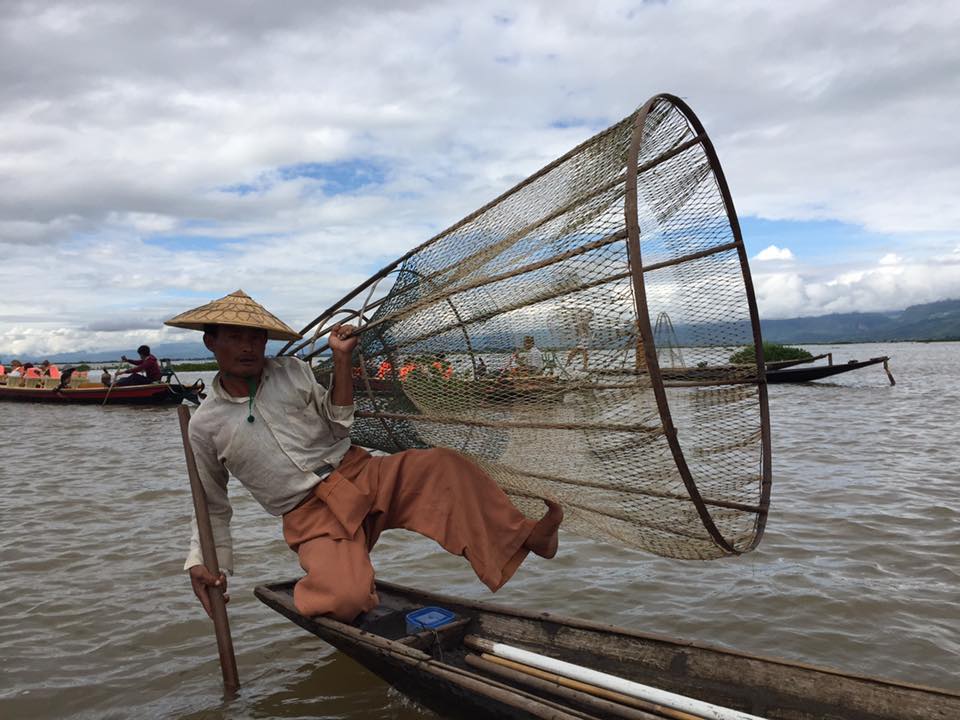
Safety in Myanmar: Practical Advice for Travelers
While Myanmar offers a rich and rewarding travel experience, it’s important to keep safety in mind. The political situation in Myanmar has been unpredictable in recent years, and certain areas may be restricted to foreigners. Always stay informed about the latest developments by checking reliable travel resources.
• Travel Advisories: It’s recommended to check the latest travel advisories from government sources before your trip. Useful sites include:
• UK Foreign Travel Advice for Myanmar
• U.S. Department of State Travel Advisory for Myanmar
• Australia’s Smart Traveller Myanmar Advisory
• Swiss Confederation – FDFA Travel Advice for Myanmar
• Philippines Department of Foreign Affairs – Travel Advisory
• Local Health: Ensure you have adequate travel insurance, including coverage for medical evacuation. Consider vaccines for diseases such as hepatitis A, typhoid, and Japanese encephalitis. You can consult with your doctor and check travel health advice from:
• Centers for Disease Control and Prevention (CDC)
• World Health Organization (WHO)
• Local Safety Tips: While major tourist areas such as Yangon, Bagan, Mandalay, and Inle Lake are generally safe for travelers, it’s advisable to avoid political demonstrations or large gatherings. Stick to well-known tourist routes and check with your hotel or guide before venturing into rural or less-frequented areas.
• Road and Transportation Safety: Roads in Myanmar can be in poor condition, especially in rural areas. If you’re planning to travel by bus, train, or hire a driver, ensure that your mode of transportation is reliable and safe. Domestic flights are available and are often a safer option for longer distances. Be mindful when taking overnight buses, and if you’re hiring an e-bike in places like Bagan, always wear a helmet and drive cautiously.
• Money and Scams: Myanmar is still largely a cash economy, and ATMs may not be available in remote areas. It’s advisable to carry sufficient cash, especially when traveling outside major cities. Use secure locations to exchange money, and beware of scams or counterfeit notes. Keep your valuables secure, and avoid displaying large amounts of money in public.
• Local Customs: Myanmar is a predominantly Buddhist country, and respecting local customs is essential. Always dress modestly when visiting temples or religious sites—covering your shoulders and legs is required. Remove your shoes and socks before entering pagodas. Showing respect to monks, elders, and sacred sites is important in Myanmar’s culture.
Flight Information: Cities with the Most Frequent Flights to Yangon
For travelers looking to fly directly to Yangon, several cities in Southeast Asia and beyond offer frequent, convenient connections. Below are the cities with the most regular direct flights to Yangon International Airport (RGN):
• Bangkok, Thailand: One of the busiest routes, with multiple daily flights operated by Thai Airways, Bangkok Airways, and Myanmar National Airlines. The flight time is approximately 1 hour and 15 minutes.
• Singapore: Direct flights from Singapore are frequent, with Singapore Airlines, Scoot, and Jetstar offering several flights daily. The flight duration is about 3 hours.
• Kuala Lumpur, Malaysia: Malaysia Airlines and AirAsia provide regular flights from Kuala Lumpur to Yangon, with a flight time of about 2 hours and 45 minutes.
• Doha, Qatar: Qatar Airways operates frequent direct flights from Doha to Yangon, connecting Middle Eastern, European, and North American travelers to Myanmar. The flight duration is around 6 hours and 30 minutes.
• Hong Kong: Cathay Pacific and Myanmar National Airlines offer frequent flights from Hong Kong to Yangon, with a flight time of about 3 hours.
These cities provide the most frequent and reliable connections to Yangon, making them ideal hubs for beginning your journey through Myanmar—from Yangon to Bagan and Mandalay.
Conclusion: A Journey to Remember
The journey from Yangon to Bagan and Mandalay offers a rich tapestry of experiences, from the bustling streets of Yangon to the ancient temples of Bagan, the royal legacy of Mandalay, and the serene hills of Kalaw. Whether you’re trekking through rural landscapes, witnessing spectacular sunrises, or exploring historic pagodas, Myanmar’s beauty and cultural depth will leave a lasting impression. This is a country where tradition and history meet natural wonders, making it a must-visit destination for travelers seeking a unique and enriching adventure in Southeast Asia.


